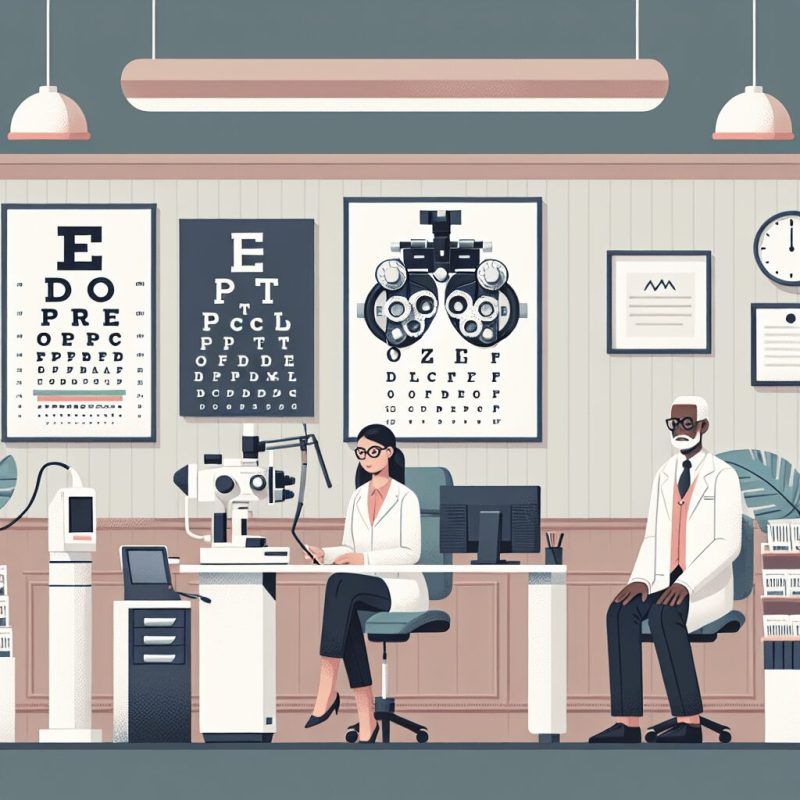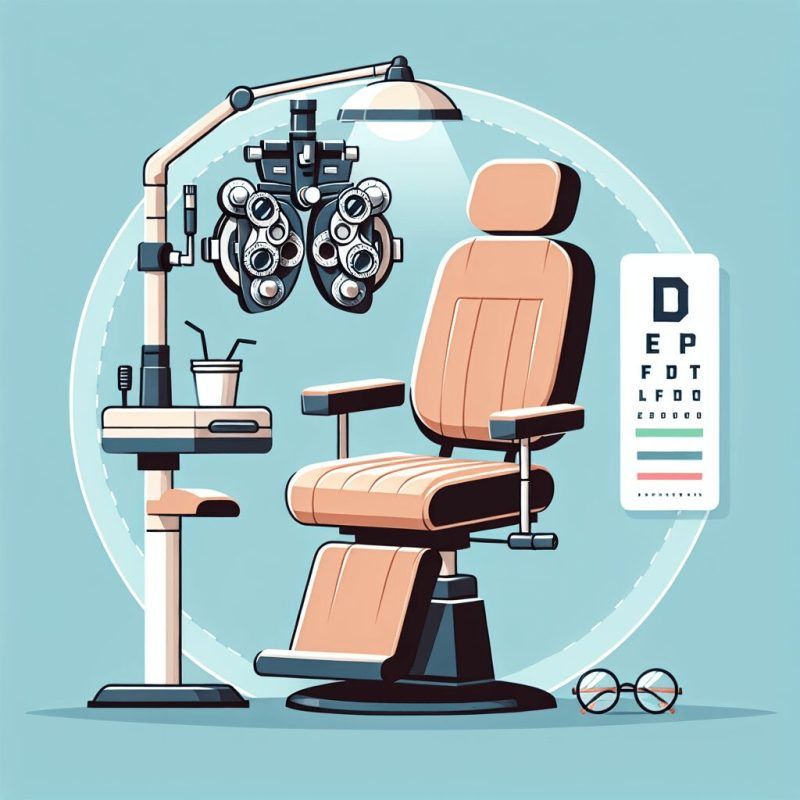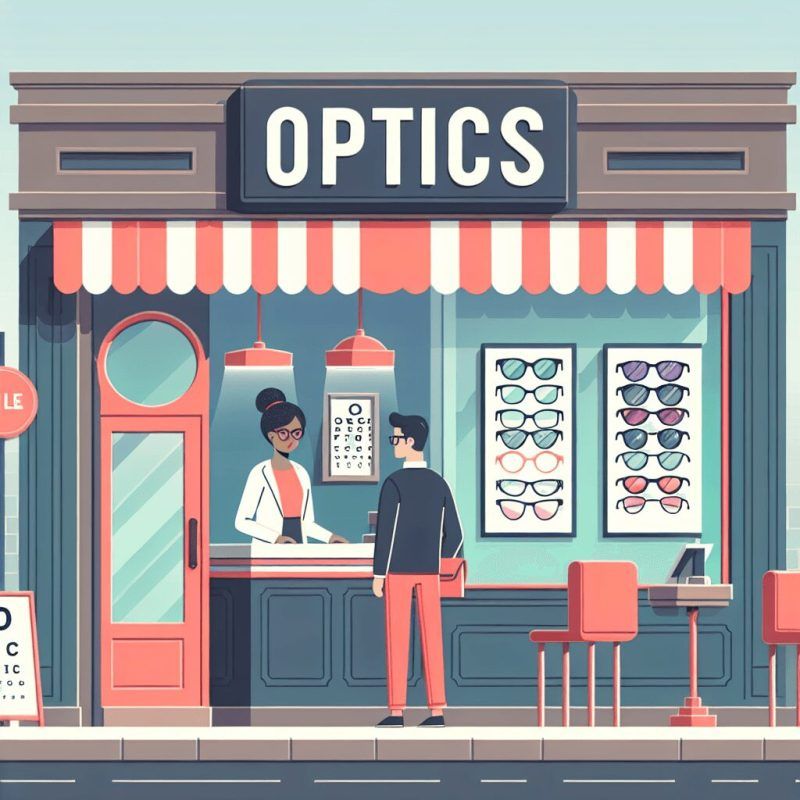Doctor's Corner
The Best Place for Eye Exam: Finding the Right Spot
Selecting the appropriate location for an eye exam greatly impacts your vision and eye well-being. With numerous choices present, determining the best option can be challenging. From complimentary exams for kids to discounts on eyewear, recognizing the services each facility provides can aid in making an informed decision. This guide will examine various options and offer tips on how to identify the best venue for your eye examination.
Understanding Eye Exams
A comprehensive eye exam includes several tests, such as a vision screening with an eye chart and a glaucoma check. An optometrist evaluates eye health and determines a prescription for glasses or contacts. It’s important to have an eye exam annually to check for changes in vision and to detect early signs of eye diseases. Adults and children can benefit from free eye exams if they shop for glasses, often offered through various programs and organizations.
Individuals should also consider their health insurance coverage, including Medicaid and Medicare, to understand any costs associated with eye care services. Preparing for an eye exam online can save time and help ensure secure access to important information. Many local community centers also provide low-cost eye care options, making eye health accessible. Understanding these factors helps maintain clear vision and promotes overall eye health.
This knowledge supports families in making informed choices about eye care for children and adults, ensuring they get the necessary assistance when needed.
Importance of Regular Eye Exams
Regular eye exams are important for everyone, including children and adults, as they help maintain eye health. They allow an optometrist to look for issues like glaucoma, which can be serious if not caught early. These exams often include vision screenings and can lead to a prescription for glasses or contacts. Many eye care programs offer free eye exams, which can be a great help for those who may find it hard to afford them.
Eye doctors also provide evaluations that can capture other health problems, like diabetes, which might show up in eye health. With different organizations and programs under Medicaid or Medicare, low-cost eye care services and free eye exams are more accessible. This makes it easier for people to keep their vision sharp and their prescriptions accurate, helping them feel more comfortable in their daily lives. Shopping on secure online platforms for prescription glasses can also help individuals manage their eye care.
Factors in Choosing the Best Place for Eye Exam
The location of an eye care provider matters for convenience and accessibility. Patients typically prefer clinics that are near home or work, as this facilitates scheduling appointments.
Additionally, the availability of services like free eye exams or affordable eye care can influence their choice. Clinics that provide comprehensive eye exams, vision screenings, and options for both glasses and contacts tend to attract more patients. The experience and qualifications of eye care professionals should also be considered. When selecting a clinic, it’s beneficial for patients to verify if the optometrists are licensed and have a solid background. Proper credentials ensure accurate prescriptions and effective assessments of eye health, including screenings for glaucoma. Many local organizations and programs, such as Medicare and Medicaid, offer support that may assist with eye care costs.
For families, finding clinics that provide specific services for children, including vision screenings and glasses, is also important. Making an informed choice involves understanding the services available, the professionals’ expertise, and whether insurance or financing options are provided.
1. Location of the Eye Care Provider
The location of an eye care provider significantly impacts how easily patients can access regular eye exams. Proximity to home or work increases the likelihood that adults and children will schedule visits. If a provider is situated in a busy area or far from public transport, people may postpone their appointments. Travel time is also a factor; a shorter commute facilitates access for families, especially those with children requiring glasses or contact lens exams.
Convenience matters, as individuals are more inclined to attend eye exams if they don’t have to journey far. Furthermore, local organizations and community health centers may provide free or low-cost eye care services, encouraging patients to seek assistance within their community. Being aware of coverage options through Medicaid, Medicare, and vision insurance can aid families in finding affordable services nearby, fostering better eye care practices and timely follow-up exams.
2. Services Offered at the Clinic
Standard Vision Tests
Standard vision tests conducted during an eye exam include checking visual acuity with an eye chart, auto refraction for basic prescription, and screenings for glaucoma. These tests assess how well someone can see at different distances. For instance, an eye doctor may ask a patient to read letters from a chart to measure clarity, aiding in determining whether glasses or contacts are needed. Standard tests also contribute to identifying serious eye conditions early on.
If a person has vision problems, a comprehensive eye exam can help identify issues such as glaucoma, which may result in vision loss if left untreated. Organizations frequently offer free eye exams for children to ensure early detection and treatment of potential issues. Numerous low-cost options are accessible, with adults being able to use programs through vision insurance, Medicaid, or Medicare.
This access allows for affordable vision screenings, ensuring that individuals obtain necessary eye care while managing their health effectively.
Specialized Eye Care Services
Specialized eye care services include comprehensive eye exams that help detect conditions like glaucoma and diabetic retinopathy. Patients receive evaluations from optometrists using advanced technology for accurate prescriptions. Clinics often offer free eye exams and low-cost programs to help make eye care accessible for children and adults. During the visit, patients can expect various tests, including vision screenings and a follow-up exam if contacts or glasses are prescribed.
To prepare, bringing current eyewear and any required insurance information, like Medicaid, Medicare, or vision insurance details, is advised. Many local organizations also provide support for those who need assistance with eye care costs. For the best experience, patients can shop around local and online glass retailers to find affordable options. Ensuring a secure account online for scheduling appointments and managing prescriptions can streamline the process.
With these services, eye doctors strive to deliver quality eye care for all ages, considering the needs of those requiring glasses for children or adults.
3. Availability of Health Insurance
Insurance Options for Residents
Residents should be aware that many eye care providers accept health insurance plans like Medicare, Medicaid, and vision insurance. These plans often provide coverage for services such as free eye exams and help lower the cost of glasses or contact lenses. The variety of insurance options can significantly influence the price of eye exams and other services, with local organizations and programs potentially offering low-cost eye care or free eye exams for children.
To verify insurance coverage, residents should call the number on the back of their insurance card and ask for details about covered services. Completing paperwork online beforehand can save time. They may also want to check if their eye doctor participates in any marketplace programs or local initiatives that offer discounts on eye care. Being prepared with information like their prescription and secure account passwords can ensure a smooth visit.
4. Cost Considerations for Low-Cost Eye Care
The affordability of low-cost eye care services relies on various factors, including available programs, insurance coverage, and the type of services needed. Many organizations, like local community health centers, provide services such as free eye exams or reduced costs for eyeglasses and contacts, which can help decrease expenses.
Individuals can compare costs by checking online resources and contacting different eye doctors to understand what services are included and any potential fees for extras. Health insurance plans and government programs like Medicaid or Medicare may cover specific vision screenings and care, offering financial relief. Programs also offer free eye exams for children and adults who meet certain requirements.
5. Experience and Qualifications of Eye Care Professionals
Eye care professionals typically hold credentials from recognized organizations, which ensures they are trained to provide quality eye care. They often have years of experience, especially in conducting comprehensive eye exams and fitting patients for glasses or contacts. Many optometrists participate in continuing education programs to learn about new technologies, treatments, and recommendations for eye health.
This ongoing training enables them to provide services like glaucoma screenings and vision screenings tailored for adults and children. By participating in local or government programs, these professionals also offer free eye exams and low-cost eye care solutions, which can include prescription glasses or contact lens fittings. Families may find help through organizations or Medicaid for children needing eyeglasses.
In many areas, eye care providers offer online resources, making it easier for patients to check their coverage and manage their accounts securely.
Finding the Best Place for Eye Exam for Kids
When parents seek the best place for their child’s eye exam, they should consider several factors. The experience and qualifications of the eye doctor are important; a licensed optometrist who specializes in children’s vision can ensure a thorough eye care experience. Comprehensive eye exams, which include vision screenings and glaucoma tests, should be standard. Programs that provide free eye exams can also help families save money, especially for those using Medicaid or other vision insurance.
Clinics that advertise low-cost services or partnerships with local organizations can make care more accessible. Parents should also check if the clinic provides prescription glasses and contacts after the exams. Online glasses retailers may offer affordable options, but having the exam conducted by professionals ensures the right fit and prescription.
To enhance service, clinics could assist with follow-up exams and maintain secure online accounts for easy access to personal and insurance information. With these considerations, parents can find the best eye care for their children.
Technology and Equipment in Eye Care
Advancements in eye care technology have significantly improved the accuracy and efficiency of eye exams.
For example, equipment such as Optical Coherence Tomography (OCT) provides detailed images of the eye, enabling optometrists to detect conditions like glaucoma at an earlier stage. Autorefractors allow for quick initial prescriptions for glasses or contacts, ensuring that patients receive the correct eyewear more quickly. Many locations now offer online booking for comprehensive eye exams, simplifying the process. Individuals seeking affordable eye care may find it helpful to access programs that provide free eye exams for both children and adults. Organizations support the provision of eyeglasses and services at lower rates. It is important to understand health insurance options, including Medicaid and Medicare, as they can assist with eye care expenses.
The presence of advanced technology affects patient choices, with improved equipment leading to better outcomes, which encourages more regular eye exams. These innovations enhance eye health, streamlining the experience for glasses or contact lens fittings.
Patient Reviews and Recommendations
Patients often share their experiences with eye care providers, offering insights that assist others in selecting a clinic for eye exams. Reviews usually highlight the effectiveness of services such as comprehensive eye exams and the quality of prescriptions for glasses and contacts.
Recommended clinics often stand out because of friendly staff, timely appointments, and thorough evaluations, while negative feedback may point to long wait times or unclear communication about health insurance coverage. Suggestions also feature beneficial programs, like free eye exams for children or low-cost eye care options offered by local organizations. Overall satisfaction ratings inform potential patients about the expected quality of care, guiding decisions influenced by factors like optometrist expertise, follow-up exams and available vision screenings.
Exploring Eye Exam Options in California
Individuals exploring eye exam options in California should consider factors like affordability, types of services offered, and accessibility. Many organizations provide programs for low-cost eye care, including free eye exams with the purchase of glasses. California residents can find eye care providers by searching local listings, checking community health centers, or asking their regular doctor for referrals.
Various eye exams are available, including comprehensive eye exams and specialized contact lens fittings, ensuring that both adults and children receive appropriate care. Free vision screenings are often available through government programs like Medicaid and Medicare, as well as initiatives from local organizations.
Additionally, some universities may offer affordable eye exams through student programs. When selecting an eye doctor, individuals may want to confirm the acceptance of vision insurance, helping to lower costs. After visiting the optometrist, patients receive a copy of their prescription, which can be used to shop for glasses or contacts through online retailers or local stores.
Making an Appointment: The First Step to Healthy Eyes
When looking to schedule an eye exam, it’s advisable first to investigate local eye care providers to find licensed optometrists. Being aware of the services available, such as comprehensive eye exams and special tests for conditions like glaucoma, aids in making an informed choice. Some organizations provide free or low-cost eye exams, which is useful for families, particularly those requiring glasses for children. Researching specific programs can uncover more affordable options.
Considering vision insurance and any benefits from Medicare or Medicaid can greatly cut down on expenses related to eye care, including follow-up exams and prescription glasses. For individuals needing contacts, knowing the differences in exams for glasses versus contacts will help set expectations. Completing necessary paperwork online prior to the visit can facilitate a smoother experience.
Maintaining personal information online, such as passwords and health insurance details, boosts security while arranging appointments with eye doctors or online eyewear retailers.
FAQ
What should I look for when choosing a place for an eye exam?
Look for a certified optometrist or ophthalmologist in a convenient location with positive reviews. Check if they accept your insurance and offer updated technology, like digital retinal imaging. Consider their range of services, including prescription glasses and contact fittings.
How often should I schedule an eye exam?
Adults should schedule an eye exam every one to two years. If you wear glasses or contact lenses, do so annually. Those over 60 or with specific health conditions, like diabetes, should consult their eye doctor for a tailored schedule.
Are there specific credentials I should check for eye care providers?
Check for specific credentials like Doctor of Optometry (OD) for optometrists and Medical Doctor (MD) for ophthalmologists. Verify their state licensure, board certification, and any additional specialties. You can check their qualifications on state licensing boards or professional organizations.
What is the difference between an optometrist and an ophthalmologist during an eye exam?
An optometrist performs routine eye exams, prescribes glasses, and manages common vision issues. An ophthalmologist conducts comprehensive exams, diagnoses eye diseases, and performs surgery. For example, see an optometrist for a new prescription and an ophthalmologist for cataract surgery.
How can I find reviews or recommendations for local eye exam locations?
You can find reviews for local eye exam locations by using websites. Check social media platforms for recommendations, or ask friends and family for personal experiences. Additionally, consider visiting the Better Business Bureau for ratings and complaints.
Ensure your vision is in expert hands. Visit Superior Eye Care in The Woodlands or Quality Eye Care in Willowbrook, Texas, for comprehensive eye exams and personalized care. Our experienced team is dedicated to providing the best eye care to help you maintain clear, healthy vision.
The post The Best Place for Eye Exam: Finding the Right Spot first appeared on Optometrist in Woodlands & Willowbrook TX.
Doctor's Corner





